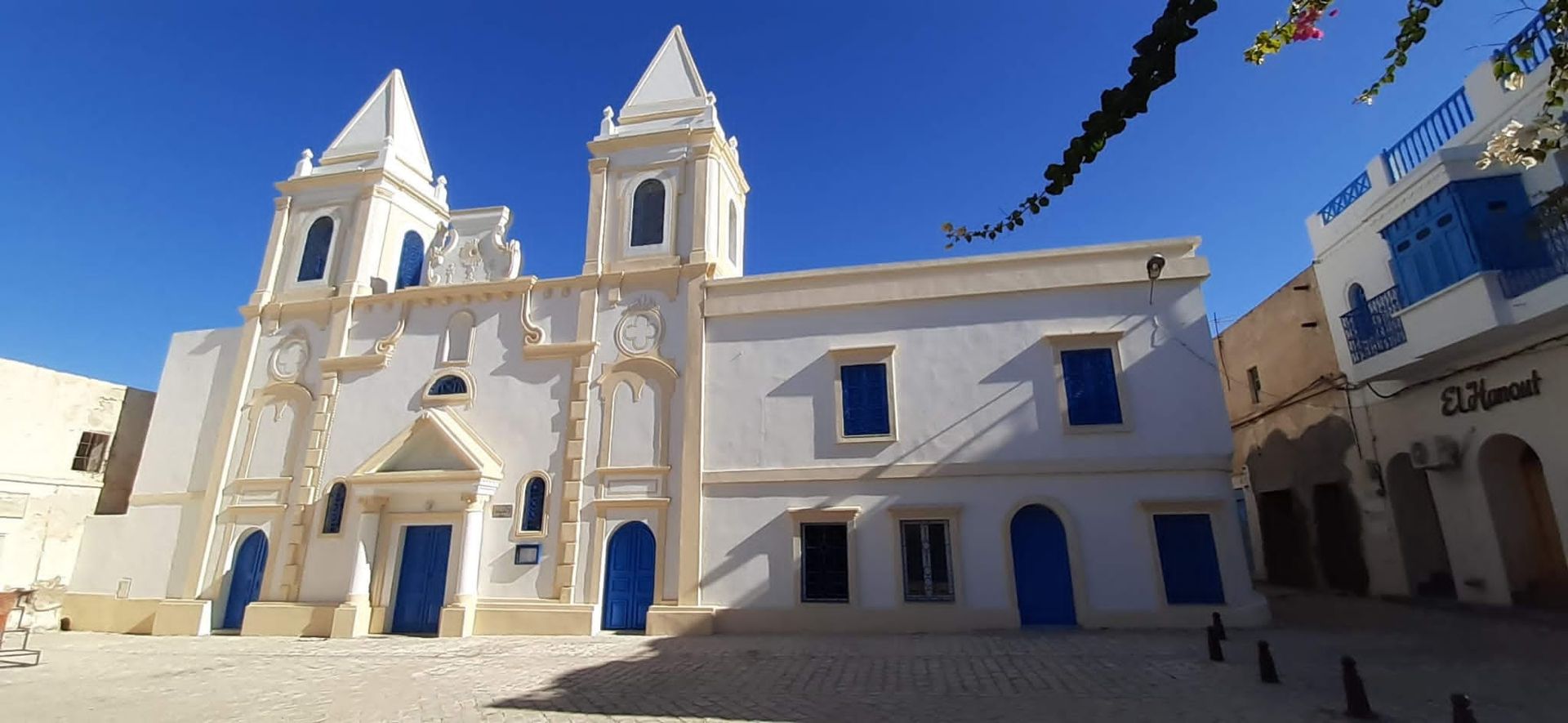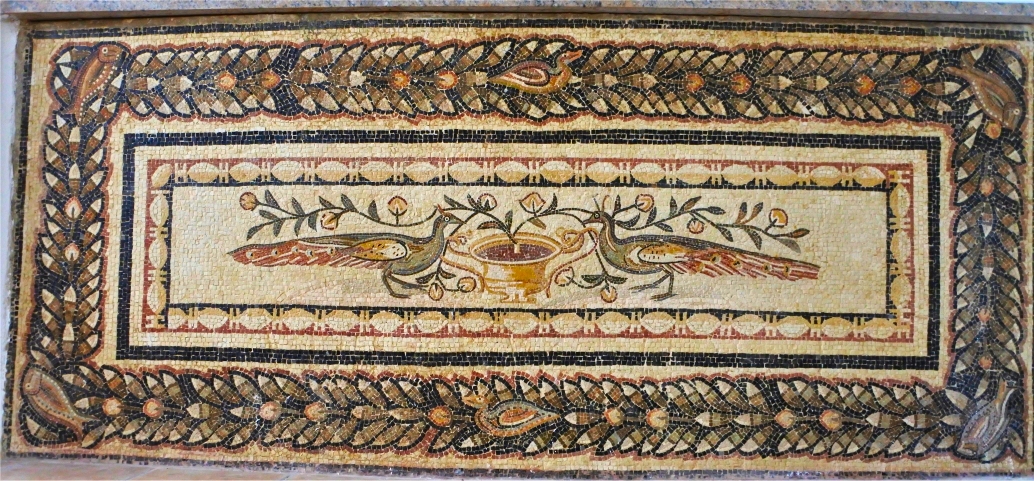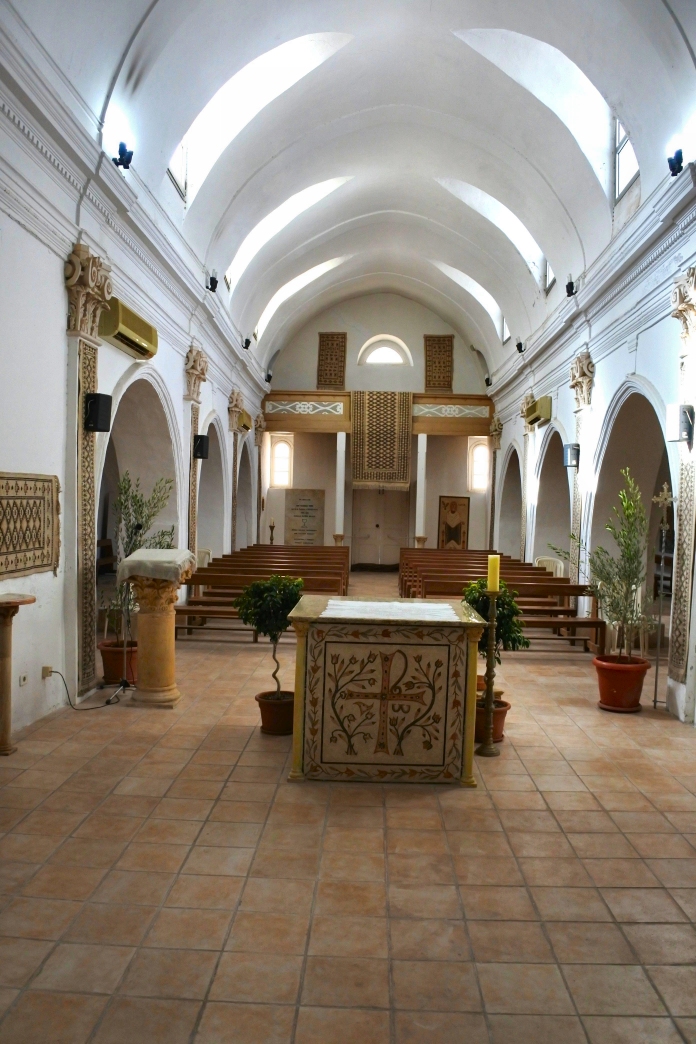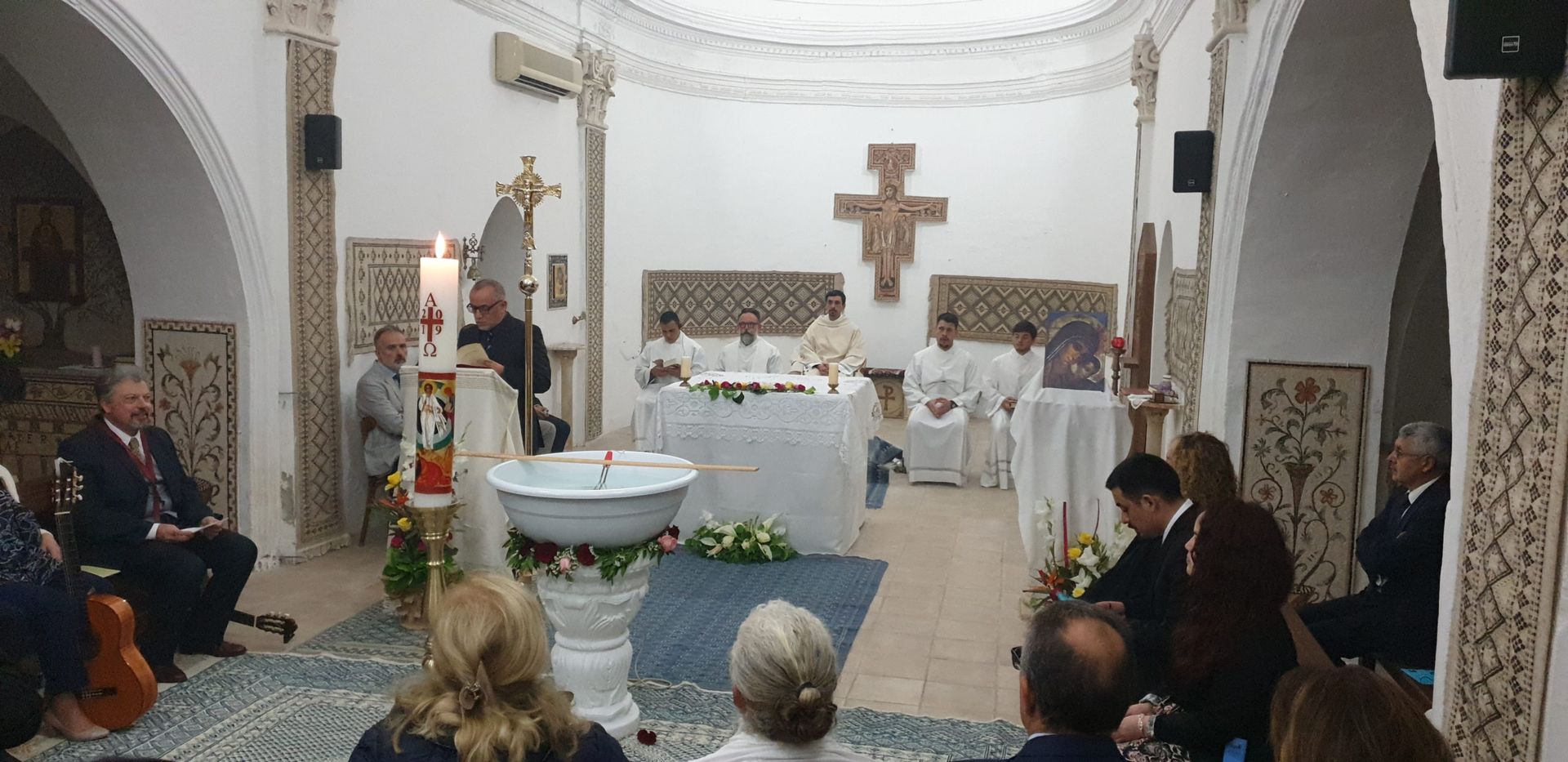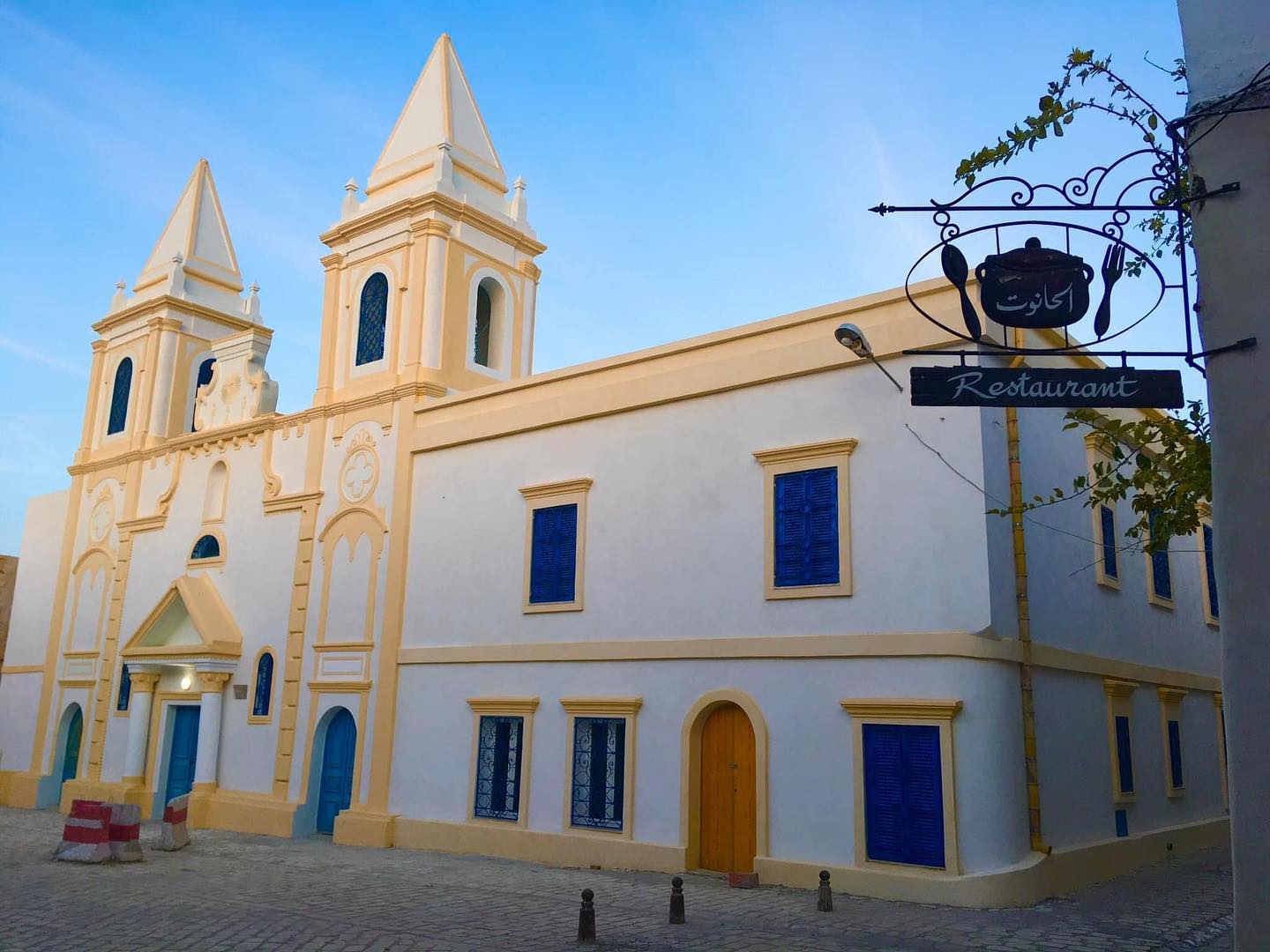Early Establishment
The presence of numerous Italian and Maltese fishermen around the island of Djerba led to the construction of the first Catholic place of worship in Houmt Souk. In 1848, after purchasing land owned by the Ben Ayed family, they collaborated to build a small square church under the guidance of Capuchin Father Gaétan de Ferrera. The altar, dedicated to Our Lady of Mount Carmel, faced south. A presbytery was also constructed to house the first priest.
One of the first tasks undertaken by the new prelate was to provide a Christian burial for Spanish soldiers massacred in 1560, whose skulls had been used to build Borj-er-Rous, the Tower of Skulls. After separating human remains from animal bones, he laid the soldiers' remains to rest in the Christian cemetery.
Expansion of the Church
The arrival of Capuchin Father André Bois in 1855 transformed the church. He doubled the size of the nave, expanded the building to accommodate a choir, and relocated the entrance to its current position. By the end of the renovations, the church's size had tripled. To enhance its beauty, the prelate brought a life-sized crucifix and a wax image of Saint Lucia, containing some of her relics, from Malta.
Originally from the historical region of Savoie, recently attached to France, Father Bois displayed the tricolor flag and did not hesitate to celebrate Sundays and holidays by firing a cannon, the source of which remains a mystery.
Protectorate Period
The establishment of the French protectorate did not bring significant changes. French residents remained scarce, and the Christian population was still predominantly composed of Maltese fishermen, with catechism and homilies delivered in Tunisian Arabic, similar to Maltese. Cardinal Charles Lavigerie even warned the priests he appointed to this parish, stating, "Djerba has three or four hundred Christians lost among thirty thousand Muslims."
Under Lavigerie's influence, the White Fathers replaced the Capuchin brothers from 1891 onwards. In 1895, Greek fishermen, who were increasingly numerous on the island, constructed an Orthodox church.
In 1906, under the leadership of Father François Xerri, the church's interior was renewed. Six large windows (three on each side) were opened, twelve pillars were erected and adorned with cornices and capitals. These were carved in Maltese stone by a sculptor from Gozo. To decorate them, the faithful contributed to dress them in Lyon damask. A new presbytery was also built on the site of the old one, which was falling into ruin. Two bell towers now flank the church's façade, which is dedicated to Saint Joseph.
Father Xerri, who passed away on December 24, 1946, after 45 years as head of the parish, was buried in the church. His successor, Father Verney, modernized the place of worship by installing electricity supplied by a generator he installed himself. He also built an open-air cinema on the church square. The Christian community now included foreign worshippers as the island's tourism industry developed.
In 1956, donations from the faithful and the Archdiocese of Carthage allowed for the replacement of the altar and the retiling of the church. These renovations also involved the removal of the statues of Saint Peter and Saint Paul, which had been installed on the façade and were at risk of falling.
| Period | Baptisms | Marriages | Burials |
|---|---|---|---|
| 1900 | 25 | 2 | 10 |
| 1910 | 24 | 2 | 8 |
| 1920 | 21 | 16 | 9 |
| 1930 | 24 | 2 | 7 |
| 1940 | 19 | 9 | 7 |
| 1950 | 17 | 6 | 5 |
Post-Independence
The modus vivendi signed between the Tunisisaintjoseph.djerba@gmail.coman government and the Vatican on July 10, 1964, designated the Houmt Souk church among those to be ceded to the Tunisian government. It was then transformed into a study hall for underprivileged children and later into a sports hall.
Despite numerous requests from tourists and the German Catholic organization, Tunisian authorities remained unresponsive to multiple efforts initiated by the Archdiocese of Tunis to build a chapel near the hotels. A German owner even offered a piece of land near Sidi Mahrez, to no avail. It wasn't until February 18, 2005, that a positive response was obtained. In the absence of a new chapel, Saint Joseph Church was once again returned to its original purpose. It was then restored and decorated with ancient Christian mosaics discovered in Tunisia.
